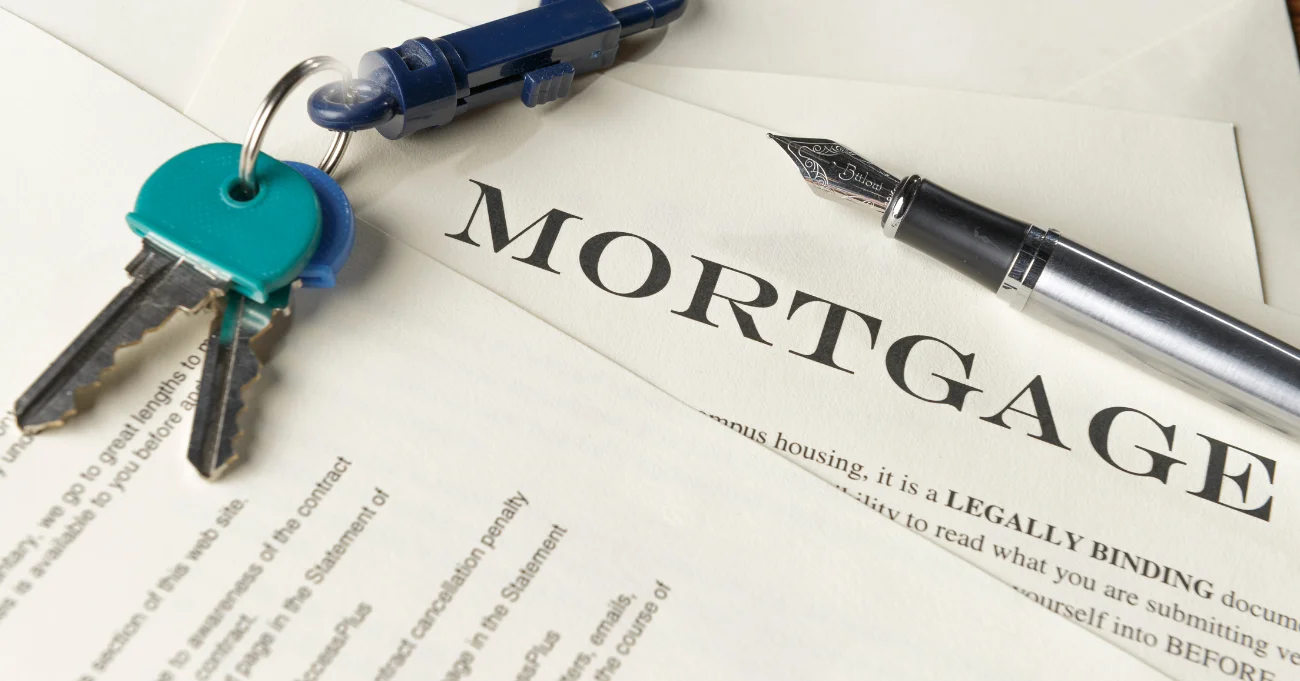When it comes to financing, DSCR loans for property investment have become a popular choice for investors looking for flexibility to scale their portfolio. While DSCR loans offer fantastic benefits for real estate investors, they also come with specific risks and drawbacks. Before getting any DSCR loans for property investment, it’s important to understand common mistakes, so you can avoid costly errors and maximize your returns.
In this article, we’ll be exploring the 7 most common mistakes to watch out for when taking advantage of DSCR loans for property investment, keeping your strategy solid and sustainable.
The Basics of DSCR Loans for Property Investment
Firstly, let’s go over the fundamentals of DSCR loans for property investment. Having a solid understanding of how DSCR loans work will lay the groundwork for incorporating these loans into your investment strategy.
What Is a DSCR Loan?
A DSCR loan, also known as a debt-service coverage ratio loan, is a type of financing that uses the property’s income as a main qualification factor, rather than the borrower’s income. This allows investors to easily scale their investment property portfolio without their documented income holding them back.

Calculating Your Property’s DSCR
Calculating your property’s DSCR is fairly simple. First, calculate the net operating income (NOI) for the year, which is the property’s income minus operating expenses. Then, determine the annual debt service, including both principal and interest payments. Lastly, take the NOI and divide it by the debt service.
Where to Get DSCR Loans for Property Investment
Real estate investors often turn to non-bank lenders and private mortgage lenders that cater to alternative financing options, like Defy Mortgage. These lenders typically offer more flexibility and a faster approval process compared to traditional banks. Before getting any DSCR loans for property investment, make sure to compare lenders and their terms to find the best fit for your investment strategy – factoring in interest rates, loan terms, and fees.
If you’re ready to get started on your investment property journey with DSCR loans, schedule a free consultation with Defy and we can guide you through the process.
Financing Investment Properties with DSCR Loans
DSCR loans are designed with income-generating properties in mind, making it ideal for financing an investment property. Here are some benefits you can expect if you use DSCR loans for property investment:
- Personal Income Not Required: Investors can qualify based on the property’s performance, not their own personal income.
- Flexible Qualification Requirements: Makes it easier for investors with complex or non-traditional income streams to qualify for a DSCR loan.
- Scalability: DSCR loans aren’t capped by personal debt-to-income (DTI) ratios, which allow for multiple property acquisitions.
- Streamlined Approval Process: Using the property’s income rather than requiring extensive personal documentation makes the approval process quicker and more streamlined.
- Potential for Competitive Interest Rates: Depending on the lender, these loans may often come with competitive rates compared to other investment loan options, especially when the property shows strong cash flow.
Types of Investment Properties
When considering DSCR loans for property investment, it’s important to understand the different types of properties that can qualify. Here’s a breakdown of the most common property types that investors use DSCR loans for:
- Short-Term Rentals: These are properties typically rented out on platforms like Airbnb or Vrbo, offering investors the potential for higher income with shorter stays. (If you’re a real estate investor, check out our expert STR-data partner, Rabbu!)
- Long-Term Rentals: These properties are leased to tenants for extended periods, typically six months to a year or more.
- Multi-Family Properties (2+ units): Multi-family properties, such as duplexes, triplexes, or apartment buildings, offer multiple rental units within a single property.
- Single-Family Homes (1 unit): Single-family homes are a classic choice for real estate investors since they are simple and easy to manage.
- Commercial Properties: Commercial properties, including office buildings, retail spaces, and industrial properties, also qualify for DSCR loans.
Each property type offers unique advantages depending on your investment strategy. DSCR loans for property investment allow you to finance a wide variety of property types, so you can diversify your rental portfolio.

7 Common Mistakes When Using DSCR Loans for Property Investment
Now that we’ve covered the basics of DSCR loans for property investment, let’s get into the most common mistakes investors tend to make during the process.
Mistake 1: Misunderstanding the DSCR Calculation
As we covered earlier in this article, the DSCR measures a property’s ability to cover its debt obligations through its net operating income (NOI). Investors often miscalculate DSCR by using inaccurate income or expense estimates, which can lead to an inflated ratio that doesn’t properly reflect reality. To avoid this error, make sure to carefully estimate your property’s income and operating expenses, accounting for potential vacancy periods, maintenance costs, and market fluctuations.
Mistake 2: Overestimating Property Income
Relying on overly optimistic rental income projects can lead to potential cash flow issues, making it difficult to make monthly mortgage payments if the property doesn’t meet expectations. It’s better to use conservative income estimates, while factoring in local market conditions and potential vacancies. When calculating projections, conduct thorough market research, analyze comparable properties, and stay updated on any trends that could impact rental demand.
Mistake 3: Underestimating Operating Expenses
Ignoring or underestimating costs like maintenance, property management fees, and vacancies can negatively impact your cash flow and affect your ability to make your monthly mortgage payments. It’s important to accurately forecast operating expenses to avoid this. Start by researching typical costs for similar properties and consult with property managers. On top of that, consider building a buffer for unexpected expenses, such as emergency repairs or longer-than-expected vacancies.

Mistake 4: Choosing the Wrong Property Type
Different property types, such as residential, commercial, and mixed-use, could impact DSCR differently because of varying income stability and potential market risks. When choosing a property type, consider how predictable the income stream will be and the cash flow potential. Properties with unpredictable income, like short-term rentals or certain commercial properties, may struggle to meet DSCR requirements if they don’t have a strong cash flow.
Mistake 5: Ignoring Interest Rate Fluctuations
Interest rate fluctuations can directly affect your loan’s affordability by increasing monthly payments, which potentially lowers your DSCR and jeopardizes loan eligibility. It’s important to lock in favorable interest rates when possible or, if considering adjustable-rate loans, be prepared for future rate hikes that could impact cash flow. To manage this risk, investors should be closely monitoring interest rate trends, consider rate caps on adjustable-rate loans, and build a solid buffer into their financial projections to withstand any fluctuations without compromising their investment.
Mistake 6: Disregarding Vacancy Rates
Disregarding vacancy rates can lead to inflated DSCR calculations and unrealistic income projections. If actual vacancy rates exceed your original estimates, the property’s net operating income (NOI) could fall short of covering the monthly mortgage payments. This could cause financial strain and negatively impact cash flow. Ignoring vacancy rates creates a false sense of security, which could lead to investors taking on more debt than the property’s income could support. Reviewing historical vacancy trends and researching market conditions can help you avoid this mistake when calculating DSCR.
Mistake 7: Neglecting Long-Term Investment Planning
In the world of real estate investing, focusing only on short-term gains can lead to overlooking long-term property value and income stability. Remember to align the DSCR loan terms with your long-term investment goals, ensuring that the property stays profitable and can cover the loan payments over time. Before committing to a DSCR loan, create a long-term investment strategy that includes factors like market trends, potential property appreciation, and future expenses. Incorporating long-term planning into your DSCR loan approach will help you maximize both immediate returns and future success.

Final Thoughts on DSCR Loans for Property Investment
All in all, while DSCR loans for property investment can be a fantastic tool for investors, avoiding these common mistakes is essential to maximize cash flow and profits. Keeping a close eye on your property’s financial performance and taking into account potential risks, like vacancy rates and interest rate fluctuations, will set your investment property up for success.
If you’re ready to take the next step and explore how a DSCR loan could work for your investment goals, Defy Mortgage is here to help. Book a free call today with one of our mortgage experts to tailor a plan that fits your investment needs and goals.
DSCR Loans for Property Investment FAQs:
1. What is a DSCR loan, and how does it work in property investment?
A DSCR loan is a financing option that uses the property’s income as a main qualifying factor. DSCR loans for property investment are ideal for income-generating properties, such as short-term or long-term rentals.
2. How do I calculate the DSCR for a property investment?
To calculate DSCR, you can divide the property’s net operating income (NOI) by the total debt service, which includes the principal and interest payments on the loan.
3. Why is it important to have accurate income projections when using DSCR loans for property investment?
It’s important to have accurate income projections when using DSCR loans for property investment since lenders rely on these numbers to determine the loan amount and approval. Overestimating income can lead to loan default, while underestimating can limit borrowing potential.
4. What are common operating expenses that investors often underestimate?
Common underestimated operating expenses include property taxes, insurance, HOA fees, maintenance costs, vacancy losses, and property management fees.
5. How can interest rate fluctuations affect my DSCR loan?
Interest rate fluctuations can increase the total debt service with higher mortgage payments, which reduces the DSCR. This can make it more difficult to meet the DSCR requirements and also impact cash flow and profitability.
6. Is it a good idea to invest in properties with irregular income streams using a DSCR loan?
While it’s possible to get a DSCR loan for investment properties with irregular income streams, it can make it tricky to accurately predict cash flow.
7. How can overestimating rental income impact my DSCR loan application?
Overestimating rental income can make the property’s DSCR higher, which makes the property seem more profitable than it actually is. This can make it difficult to make mortgage payments if the actual income falls short of the projected income.
8. What happens if I underestimate my operating expenses when calculating DSCR?
Underestimating operating expenses can make your net operating income seem higher than it actually is, potentially making it difficult to keep up with mortgage payments if operating expenses are much higher than originally estimated.
9. How can ignoring property vacancy rates affect DSCR loans for property investment?
Ignoring property vacancy rates can inflate income projections and it can cause financial strain if the actual income fails to cover mortgage payments due to unexpected vacancies.
10. Can DSCR loans be used for all types of properties?
DSCR loans can be used for many types of investment properties, including: short-term rentals, long-term rentals, multi-family properties (2+ units), single-family homes (1 unit) and commercial properties.




